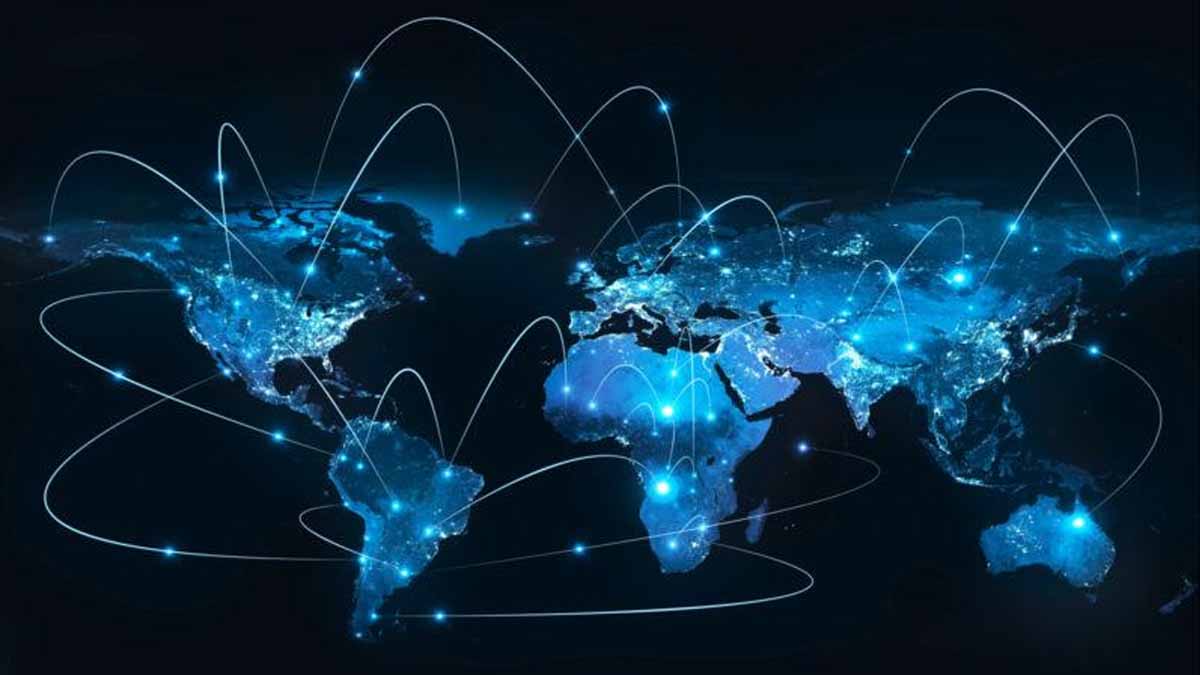According to Brian and Jenell “Though all globalization is a cultural change, not cultural change comes from globalization.” (P.204) It is surprising to know that globalization is not a twentieth-century concept since it existed from the time of the Great Alexander (around 350 BCE). Later, the Arab and Muslim empire (around 700 CE) expanded it further into most regions of Asia, Europe, and Africa. The contemporary globalization “is distinct, however, in its scope, rapid rate of development, and subsequent cultural consequences.” (P.204) Today, globalization influences almost everyone on the planet earth, previously in the ancient period, it served the elites mostly. In today’s England, the most famous cuisine is curry and the famous beverage is tea. In India, once elite English’s sport cricket dominates, most importantly, BCCI (Board of Control for Cricket in India) is the wealthiest cricket association in the world. Some say BCCI semi-commands the ICC (International Cricket Council) on its decision-making process.
Globalization changes people’s lives today all around the world in their thinking and lifestyle. In other words, culture is getting changed by globalization. New technologies in the transport medium and communication systems shrink the globe in the way of traveling time and interaction. Today, it is possible to reach London from Bangalore in ten hours. Many universities offer online programs, even it was unthinkable in a human’s mind three decades back. Internet availability changes the traditional way of learning, a decade back, it was mostly pursed by going to the university or school campus. Now, the story is changing. An Indian kid can acquire a Cambridge model school education from India and Westerners able to watch multicast of an Indian spiritual guru over the online media.
The Culture in which we live is changing constantly whether we choose it or not. The experiences among me, my father and my grandfather are not exactly the same. Probably, there is a common layout among us when all three of us lived under one roof. It has never been the same again once I left home for university education. I was transitioning from a village life from southern Tamilnadu to a Chennai city life. The life in the university enabled me to meet people from all over India, especially, the language of communication mostly happened in English, formerly, it was in Tamil. There was a sudden exposure to different foods, transport system, music, and dressing codes. Overall, it was a mouth-watering experience during the first year.
“Culture is the comprehensive and integrated complex of ideas, feelings and values, and the associated patterns of learned behavior and products that characterize a particular society.” In my sophomore year, I was able to recognize the jokes which were thrown at me in the first year since I was carrying a characteristic of the society. It changed rapidly when I started to work, particularly during my years in western Europe. How work and faith have seen separately in the secular West. But in India, the case was different. Always, I enjoyed the work with my personal faith. However, life in the west created opportunities to meet people from various country backgrounds. It was always a learning experience to know something from a different culture.
Moreover, “globalization is the integration of local, regional, and/or national production, exchange, and culture into a global system.” (P.205) I remember going to a Tesco supermarket in the United Kingdom (UK), most of the products’ origin on the shelf were not from the UK. Especially, among the vegetables’ lane, ninety percent of the produces were imported goods. In India, items like sausages, burger patties, and steaks are not alien anymore.
The three theories on globalization will clarify globalization at its best level. First, modernization theory “teaches that all societies move through stages of economic, political, and cultural development toward becoming industrialized, democratic, and ‘modern’ societies.” (P.207) Besides, it suggests that colonized countries are the most benefited party on this subject. But the western countries’ economic growth with industrialization after World Wars I and II did not create societies with “advanced” moral sense. Most importantly, many former colonial countries kept their poverty status unchanged, globalization did no impact on them.
Second, the dependency theory reasons that “the movement of global resources creates permanent relationships of economic dependence between industrial and nonindustrial nations.” (P.208) It is also moving the nation’s system from agricultural to the production mode which creates dependency among countries and encourages economic growth. On the one hand, the dependency theory creates wealth among formerly colonized countries, on the other hand, sustained underdevelopment and poverty creation among those countries inevitable.
Third, the world-systems theory expands from the dependency theory and implies that “globalization may be conceptualized as a system of nations placed in the core, semi-periphery, and periphery of an interconnected global economy.” (P.208) Still, many countries that are providing raw materials remain in an unchanged economic status. Their cheap labor market and corrupt officials do not contribute much to their country’s growth rather they deflate it. But the core nations’ citizens involve more in the services industry such as insurance, health care, and finance. Overall, all theories of globalization inform that the core nations benefit more, but semi-periphery and periphery nations benefit less or not at all.
Until the 1980s, many graduates from South India move to North-Indian cities such as Delhi and Mumbai for jobs. When two times former Prime Minister Manmohan Singh introduced a bill in the early 1990s (He was Finance Minister at that time), which encouraged foreign direct investment and the situation is started to change in Southern India. Especially, South Indian cities Bangalore, Chennai, and Hyderabad benefited more. These cities attracted many multinational companies and became IT and automobile hubs of India. They started to attract people from all parts of India and abroad. Without any surprise, fifty percent of Bangalore’s current population consists of migrants. And it is a similar story on the other two cities Chennai and Hyderabad. In other words, globalization made an impact and brought cultural diversity whether these cities choose it not.
Netflix, Amazon, Prime, IMAX theatres, Spotify, Apple TV, Uber, and CrossFit are global brands now. They have no boundaries. The e-commerce giant Amazon makes a product available for an Indian to buy from the USA and vice versa. Many Hollywood movies release on the same day as it releases in the USA, noticeably, they release a day before in places like Singapore due to the advanced time zone. Movie critics fly to Singapore or Tokyo to get hold of a new movie review a day earlier. American food chains such as KFC, Burger King, McDonald, Domino, Pizza hut and Starbucks are becoming local Bangalorean landmarks. Now, for a young American moving to Bangalore from San Francisco won’t be a difficult situation as it was two decades back. He/She can still watch her favorite entertainment channels, almost experience the same food, commute using Uber and importantly no need to learn a new language.

So far, I was talking about Metropolitan life. Yes, globalization did a humongous impact on Indian megacities. No further arguments required to prove it. What about rural areas? Last summer, as per SAIACS requirements four of us went on a mission trip in Bihar for the intercultural experience. We were involved with a missionary organization called GEMS-Bihar and their main focus is on unreached rural areas. Many villages do not have a proper road and electricity, but their hospitality was amazing. In the end, we had a surprise waiting for us. There was a common practice, after serving food we were given sweets with tea and a glass of beverage Sprite (a Coca-Cola owned beverage). Coca-Cola knows the way how to reach people’s houses where there is no proper road connection, electricity, and no gospel message proclaimed so far. When does serving Sprite become part of their culture? Many of them can’t read and write their local language and this carbonized sugary water somehow became part of their household. Initially, we doubted that the villagers are only bringing sprite since they know we are coming from Bangalore but later we realized that it was not the case as we assumed.
There is a scenario situates in the global arena if some countries do not want them to identify or take part in the globalization system then those countries seen as aliens to globalization or one world community. But India is part of the global community and somehow it affects or changes or preserves or protects the Indian culture.
Missiological Implications and Practical Applications
I am an intern with a local church, and I can see the diversity in our church, especially among youths. There is a common element among them is that they call themselves a Bangalorean, but most of their parents are migrants from different parts of India and some are from overseas countries. Moreover, Bangalore is the number one destination for students to pursue higher education in India and for many West-African nationals. So, our young adult group consists of peoples from various backgrounds. One end it makes the Great Commission simpler as we don’t want to go to nations to make disciples, but the nations are coming to us. On the other end, the approach to evangelism becomes more complexed. As we are experiencing today that one method cannot be applied to all students. In our church, we call it a Bangalorean formula. Usually, our youth ministry team spend one-to-one time with students if they are non-Christians. It helps to understand their cultural beliefs, values, practices, and so on. The openness showed by us to know them better generally gets appreciated by them.
Second, associating the Church with concerns such as social justice, human rights, environment/creation care and so on is paving a way to establish His kingdom wider. As Mother Teresa insisted “Christians have a responsibility to reject unsustainably consumptive lifestyles and a growth-oriented economic model in favor of simple and sustainable living.” (P.219) In contrast, contemporary globalization contributed to technological growth and economic growth. The global media plays an important role to spread the good news of the gospel throughout the world. Many believers debate that the Church must play a leading role to make use of the growing multimedia rather than undermining it.
Third, “globalization is not ending, it’s changing” and it regularly alters the culture too. It forces the need for contextual churches. The gospel needs to be interpreted in a way it reaches and makes sense to Urbanites. Also, providing practical implications on how Christians keep their practice not only inside the walls of the church also outside the walls of the church while still partaking in business and finance, the world of the arts and theatre, learning and scholarship, and the public and government structure. Finally, Christians “must ask difficult questions and be willing to make changes where appropriate and anthropology contributes insight into how globalization affects people and their way of life.” (P.220)
Bibliography
“Introducing Cultural Anthropology: A Christian Perspective.” Brian M. Howell and Jenell Williams Paris, 2011, Grand Rapids, Michigan: Baker Academic, Pp. 25-42, 203-220
